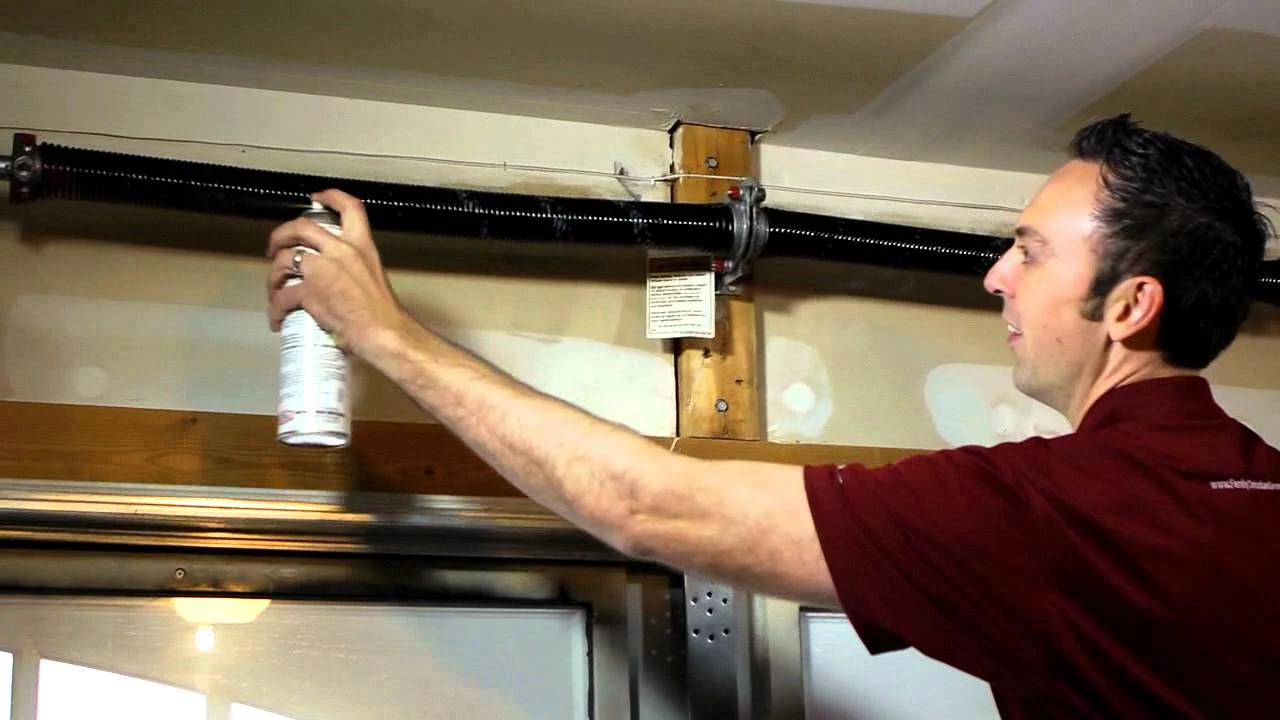A noisy garage door can be really annoying. If your garage door sounds loud and scary whenever it opens or closes, it likely needs some maintenance. Proper lubrication is important for your garage door. It helps keep it working smoothly and quietly for many years.
In this easy guide, we will show you the simple key steps on how to lubricate your garage door like a professional.
Key Takeaways
- Regular lubrication is vital for smooth and quiet garage door operation.
- Neglecting maintenance can lead to excessive noise, wear, and tear.
- White lithium grease and silicone-based lubricants are excellent choices for this job.
- Lubricate all moving parts, including hinges, rollers, springs, and tracks.
- Aim to lubricate your garage door every six months, or more often in harsh weather conditions.
Understanding how to Lubricate Garage Door?
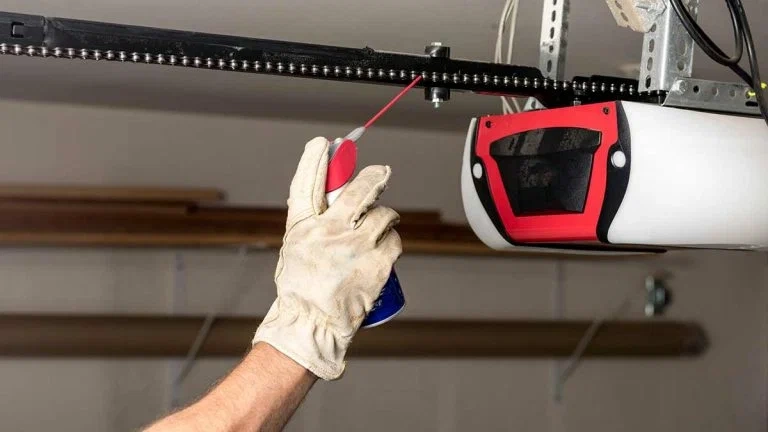
Your garage door is made up of many parts that work together. When the door moves, these parts are always in motion. Over time, this movement can cause friction, which creates wear. Using lubrication can help reduce friction. It creates a smooth layer between the different parts.
You can think of it like riding a bike. You need to oil the chain to keep it going smoothly. In the same way, adding lubrication to your garage door helps all the parts move together. This prevents sudden stops and annoying screeching sounds.
1. Importance of Regular Maintenance
Not taking care of regular lubrication is like skipping oil changes for your car. In the end, problems will happen, often when you least expect it. Regular lubrication not only helps to reduce noise, but it also keeps your garage door components in good working condition. This practice can greatly extend the life of your garage door.
Think about how annoying it is to deal with a stuck garage door when you’re already running late for work. Consider the high cost of replacing broken springs. These are just a few problems that can happen if you do not lubricate properly.
Taking the time of six months to follow these steps on how to lubricate garage door is an easy way to ensure its long-lasting and smooth operation.
2. Signs Your Garage Door Needs Lubrication
A noisy garage door can show that it needs lubrication. If you see the door jerking or sticking while moving along the tracks, it’s a sign that the moving parts have too much friction.
Also, if your garage door is slower than normal to open or close, this might mean it needs lubrication. When the door has trouble because of resistance between parts, good lubrication can fix this easily.
By taking care of these signs early, you help your garage door work well. This can save you time, money, and prevent bigger problems later on.
Why Is My Garage Door Squeaking?
That annoying squeaking sound from your garage door is a sign that it needs help. This noise happens because there is too much friction between the moving parts. This means they are not moving as smoothly as they should. Dust and debris can add to this problem, but usually, the main issue is a lack of lubrication.
Think of the bearings in your door asking for some grease! Just like a rusty hinge makes loud noises, your garage door needs lubrication to let its metal parts move quietly and freely. If you ignore these sounds, it will cause more wear and tear. This could lead to serious and expensive repairs in the future.
Preparing for Lubrication: What You Need
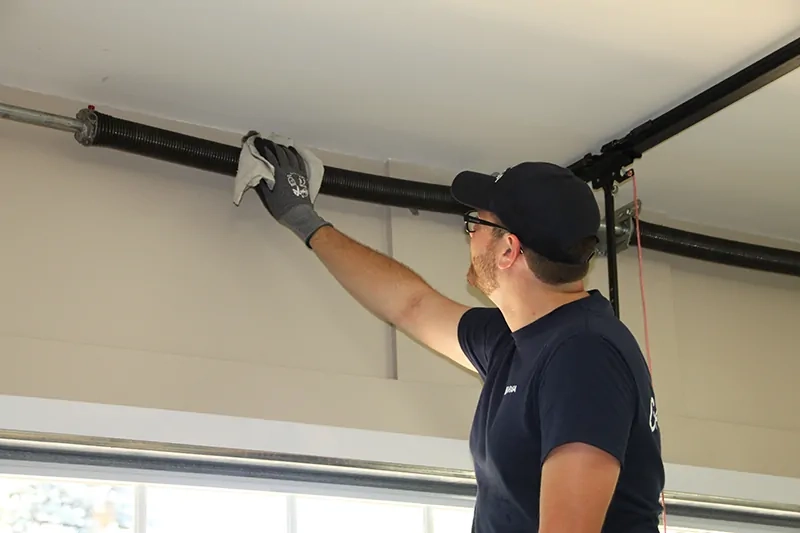
Before you start, collect your tools and materials. Getting everything ready helps the process go smoothly – really! With the right supplies and step ladder, you will be closer to a quieter and happier garage door.
Always think about safety! Before you start any work, unplug your garage door opener. This stops any surprises while you fix the door.
3. Tools and Materials Checklist
Here’s a helpful list of what you need to lubricate your garage door:
- Lubricant: White lithium grease is great for metal parts like hinge pins and springs. Silicone-based lubricant works better on nylon rollers and weather stripping.
- Application Tools: Aerosol cans with extension nozzles allow for exact application. For bigger parts, use a brush or rag to spread the lubricant evenly.
- Cleaning Supplies: A damp cloth is enough for general cleaning. For tough dirt and grime, automotive brake cleaner is very effective.
Having these tools and materials ready will help you lubricate effectively and avoid delays. Make sure you have enough lubricant to cover all moving parts. Don’t be shy about using a good amount for the best performance.
Now that you have your tools ready, let’s talk about safety!
4. Safety Precautions Before Starting
Before you start lubricating, make safety your first step with these easy tips:
- Disconnect Power: Turn off the garage door opener remote battery. This helps prevent the door from opening suddenly while you are working.
- Wear Gloves: Lubricants and grease can get messy. Wearing gloves is a good idea to keep your hands clean.
- Keep a Damp Rag Handy: Accidents can happen! Have a damp rag close by to quickly wipe up any spills or drips. This helps you avoid slips and falls.
By following these simple safety steps, you can make the lubrication process safe and smooth.
Step-by-Step Guide on How to Lubricate Your Garage Door
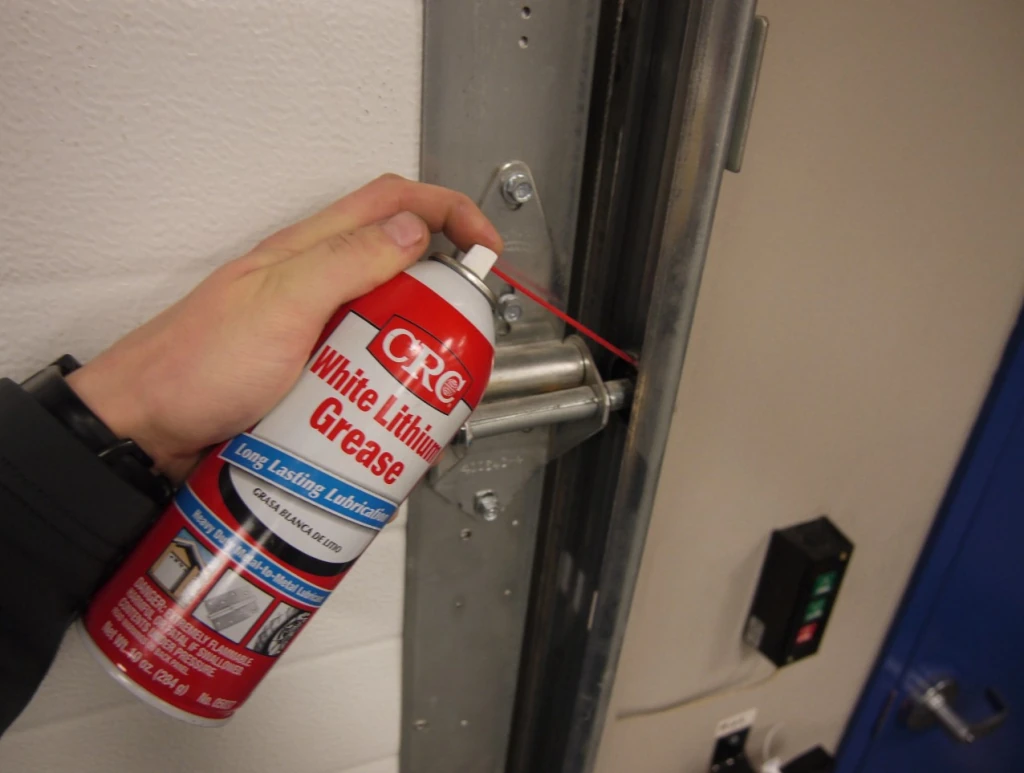
Now that you have your tools and safety gear ready, it’s time to fix up your garage door. These steps will help you in the process. You will make your garage door work smoothly like it did when it was new.
Keep in mind that a well-lubricated garage door is a happy garage door—this makes a happy homeowner too!
5. Step 1: Clean the Tracks and Inspect for Damage
Start by cleaning your garage door tracks very well. Over time, dirt, cobwebs, and buildup can form in these tracks. This can cause friction and stop the door from moving smoothly. Use a damp cloth to wipe both the inside and outside of the tracks. Make sure to remove any visible dirt.
If you find hard dirt or grease, you might want to use an automotive brake cleaner. This strong cleaner can help break down tough buildup, keeping your tracks clean and ready for the door to move easily.
Look at the tracks for any damage, like dents, bends, or loose brackets. Fixing these problems early can stop further damage and help your garage door work properly.
6. Step 2: Lubricate the Rollers and Hinges
Next, lubricate the garage door roller replacement and hinges. This is one of the most important steps in how to lubricate garage door. If you have metal rollers, use white lithium grease on the bearings. The extension nozzle on your lubricant can will help you apply it directly to the bearings, ensuring proper lubrication.
If your garage door has nylon rollers, use a silicone-based lubricant instead of lithium grease. Lithium products can harm nylon. Put the lubricant on the hinge points where the rollers attach to the door sections.
While you lubricate each roller and hinge, open and close the door by hand a few times. This helps spread the lubricant evenly.
7. Step 3: Apply Lubricant to the Springs
Torsion springs are strong springs found above the garage door. They help balance the door’s weight. It’s important to lubricate them for smooth and safe use. You should use white lithium grease. Apply a thin, even coat along the springs. Make sure to avoid too much grease.
Too much lubricant can catch dirt and debris. This will stop proper lubrication. After applying the grease, use a clean rag to wipe away the extra.
Keep in mind that torsion springs are under high tension and can be risky if not handled correctly. If you feel unsure, it’s better to get help from a professional.
8. Step 4: Oil the Chain or Screw Drive
If your garage door opener has a chain drive, you need to keep it lubricated. This is another key step in how to lubricate garage door properly. This helps it work smoothly and quietly. Put a thin layer of mechanic’s grease on the chain. Make sure it gets on every link.
For screw drive openers, check your owner’s manual. It will show you where to lubricate and what correct type of lubricant to use.
Do not use WD-40 or other light oils on your chain drive. They can attract dust and can make the chain wear out faster.
Lubricating the chain drive well will help your garage door open and close smoothly and quietly. This contributes to the good working condition of your garage door system.
9. Step 5: Test the Door’s Balance and Alignment
Once you finish lubricating all the moving parts, it’s a good idea to test the door’s balance and alignment. You can do this by disconnecting the opener and lifting the door halfway by hand.
The door should remain in place and not move up or down. If it moves, there may be a balance issue. This could put extra stress on the door opener and other parts.
Testing the balance is important. It helps with weight distribution and stops strain on the lifting mechanism. This also reduces noise and ensures smooth operation.
10. Step 6: Wipe Away Excess Lubricant
Using lubricant is important for a garage door to work well. However, too much can cause problems. Extra lubricant can attract dirt and grime. This makes things sticky and can damage different parts.
Take a moment to clean away any excess lubricant. You can use a damp cloth for this. Focus on areas where the lubricant may drip, like near the rollers and hinges. By doing this, you will keep everything clean and working well. It will help your lubrication efforts last longer.
Remember, a small amount is enough. Cleaning off excess lubricant is just as important as applying it the right way.
11. Step 7: Perform a Final Operation Check
After you finish the lubrication, it’s time for the final check. First, close the garage door all the way, then open it again. Listen carefully for any strange sounds or rough movements. You should hear a smooth and quiet operation with little effort.
If you see a big improvement in how the door moves and it makes less noise, that’s good news! Your lubrication worked! Now your garage door can handle many more times of opening and closing.
But, if problems continue or you hear grinding or scraping noises, it could mean a bigger issue. You might need to get a professional to take a look.
Selecting the Right Lubricant
Choosing the right lubricant is important for keeping your garage door working well and lasting a long time. You might want to just grab a can of WD-40, but that’s not the best choice for how to lubricate garage door.
Instead, pick either lithium-based grease or silicone-based lubricant. Lithium-based grease works really well for metal parts like hinges, springs, and bearings. It gives strong protection against friction and wear. Silicone-based lubricants are better for nylon parts and weatherstripping.
They won’t hurt or wear out those parts. Plus, silicone works well in extreme temperatures, keeping its lubricating ability strong.
12. Pros and Cons of Common Lubricants
When it comes to lubricating your garage door, choosing the right product is key. Let’s look at the good and bad points of common options to help you decide:
- Silicone-Based Lubricant: This option is very versatile. It works well with different materials like metal, nylon, rubber, and plastic. Its thin texture helps it reach tight spaces easily. But, it might not last as long as lithium grease in heavy-duty areas.
- White Lithium Grease: This thicker grease is great for high-friction spots like hinges and springs. It lasts a long time and resists getting washed away by water. The downside is that its thicker texture can make it messy to apply and may not work well with all materials.
- WD-40: While many people think of it as a cure-all, WD-40 is mainly a water-displacing solvent, not a true lubricant. It’s good for cleaning and loosening rusted parts. However, the lubrication it provides doesn’t last long enough for garage door components.
12. Recommended Products
Choosing the right garage door lubricant from so many options can be hard. Here are some top picks to make your choice easier:
- 3-IN-ONE Garage Door Lubricant: This lubricant is made to handle extreme temperatures. It’s great for different weather conditions. It lowers friction and noise, helping your garage door run smoothly.
- Blaster Garage Door Lubricant: If you need a flexible option, this silicone-based lubricant is a good fit. You can use it on metal, nylon, and vinyl. Its quick-drying feature keeps things tidy and lessens dust build-up.
- Lithium Grease Spray: For tough jobs, a lithium grease spray works well. It gives ongoing protection against friction and wear. This makes it perfect for hinges, springs, and other high-stress spots. Look for one with a nozzle to aim precisely.
These are just a few examples, and there are many other great garage door lubricants out there. Always read and follow the manufacturer’s instructions to get the best results and stay safe.
Maintenance Tips for Prolonging Garage Door Life
Keeping up with more than just lubrication is important for your garage door. It can help extend its lifespan and avoid expensive repairs. Regular checks allow you to find possible issues before they turn into big problems.
Just like you take your car for regular check-ups, spending a few minutes every few months to inspect your garage door can help you avoid headaches and cost of replacement.
13. Routine Inspection Checklist
A regular check of your garage door helps it last longer and work well. Make it a habit to do these checks every few months:
- Visual Inspection: Look closely at all garage door parts like springs, rollers, hinges, and tracks for any signs of wear, rust, or damage. Pay special attention to the springs for cracks or fraying.
- Balance Test: It’s important to test the door’s balance from time to time. Unplug the opener and lift the door halfway by hand. If it stays in place, it shows good balance and prevents stress on the opener.
- Weatherstripping: Check the weatherstripping around the door frame. Change any cracked or hard pieces to keep a tight seal. This helps stop drafts, moisture, and bugs from getting into your garage.
Doing regular checks keeps your garage door safe and working well, while also helping it last longer.
14. When to Seek Professional Help?
While many homeowners can follow these steps on how to lubricate garage door. If your door still does not work right after you lubricate it, that’s a sign to get help from an expert.
Problems like broken springs, damaged tracks, or faulty openers need special skills and tools. Trying to fix these issues on your own can be risky and may cause more damage.
Garage door repair professionals have the right training and experience to identify and solve complex problems effectively. They make sure your door is fixed properly, which helps reduce the chances of future issues and keeps you safe.
What if the Lubrication of Garage Door Parts Doesn’t Help?
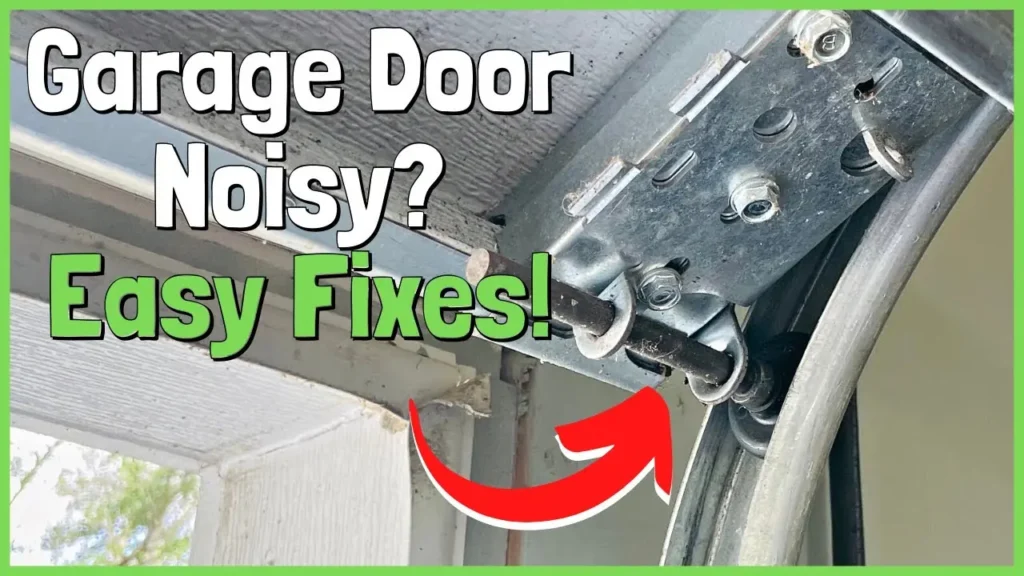
Lubricating your garage door is a great way to keep it working smoothly. However, if you’ve done this and still have problems, there may be other issues to think about.
Things like worn-out rollers, misaligned tracks, or broken garage door openers can cause trouble. If that’s the case, just following steps on how to lubricate garage door might not help.
It’s important to check all garage door components for any signs of damage or wear. If you don’t feel sure about it, getting help from a professional for garage door repair is a smart idea. They can find the issue and suggest the best solution. This can save you time and effort while also preventing more damage.
Conclusion
In conclusion, taking care of your garage door is very important. Regular maintenance and proper lubrication keep it working well and make it last longer. By using the guide on how to lubricate garage door you can stop problems like squeaking and improve its performance.
Always check your garage door regularly. If you find issues, get professional help quickly. Caring for your garage door will save you money on repairs. It also lets you feel secure, knowing your garage door is in good working condition. Remember to keep it well-lubricated to prevent any wear and tear.
Frequently Asked Questions
1. How often should I lubricate my garage door?
Regularly lubricating your garage door, every six months at least, helps keep all the moving parts in good working condition. This easy maintenance tip makes sure everything is well-lubricated and stops important parts from wearing out too soon.
2. Can I use WD-40 as a garage door lubricant?
Using WD-40 can help silence a noisy garage door for a short time. However, it’s not a real lubricant and can attract dirt and grime. Instead, pick a lubricant made just for garage doors.
3. Should I lubricate the tracks of the garage door?
Do not lubricate the garage door tracks. Using lubricant can attract dust and dirt. This buildup can make it hard for the door to work smoothly. Instead, concentrate on lubricating the moving parts.
4. Is it necessary to lubricate garage door springs?
Lubricating garage door springs, especially the torsion springs, is important for good maintenance. Using white lithium grease is the best choice. It helps reduce friction and noise. This makes the garage door operate smoothly and quietly.
5. What are the signs of over-lubrication?
Too much lubrication can cause excess lubricant to drip from garage door parts. This can bring in dirt and grime. In the end, it can make lubrication less effective, and you will need to clean more often. It’s important to lubricate regularly and use the right amount.
6. What is the best lubricant for garage doors?
The right lubricant for taking care of garage doors usually depends on the type of material. Use a silicone-based lubricant for nylon parts and white lithium grease for metal parts. This helps keep them in good working condition.
7. What is the best lubricant for garage door tracks?
It’s better not to put any lubricant directly on garage door tracks. Using silicone sprays or other lubricants can pull in dirt and debris. This buildup can make friction worse.
8. How to lubricate garage door hinges?
To keep your garage door working well and to reduce noise, use white lithium grease on the hinges. Make sure to apply it to the moving parts where the hinge pivots. This will help your door open and close smoothly.
9. What is the best thing to lubricate a garage door with?
The right lubricant for your garage door depends on its parts. Use white lithium grease for the metal parts. For nylon rollers and weather stripping, silicone-based lubricant is a better choice.
10. Are you supposed to lubricate garage door chains?
Regular lubrication of your garage door chains is important, especially if you have a chain drive system. This helps keep everything in good working condition. You should use mechanic’s grease. Apply it to each chain link to ensure smooth and quiet operation.
11. Should garage door springs be lubricated?
Sure! Lubricating garage door springs, like torsion springs, can make less noise and help them last longer. For the best result, use a light layer of lithium-based grease.

